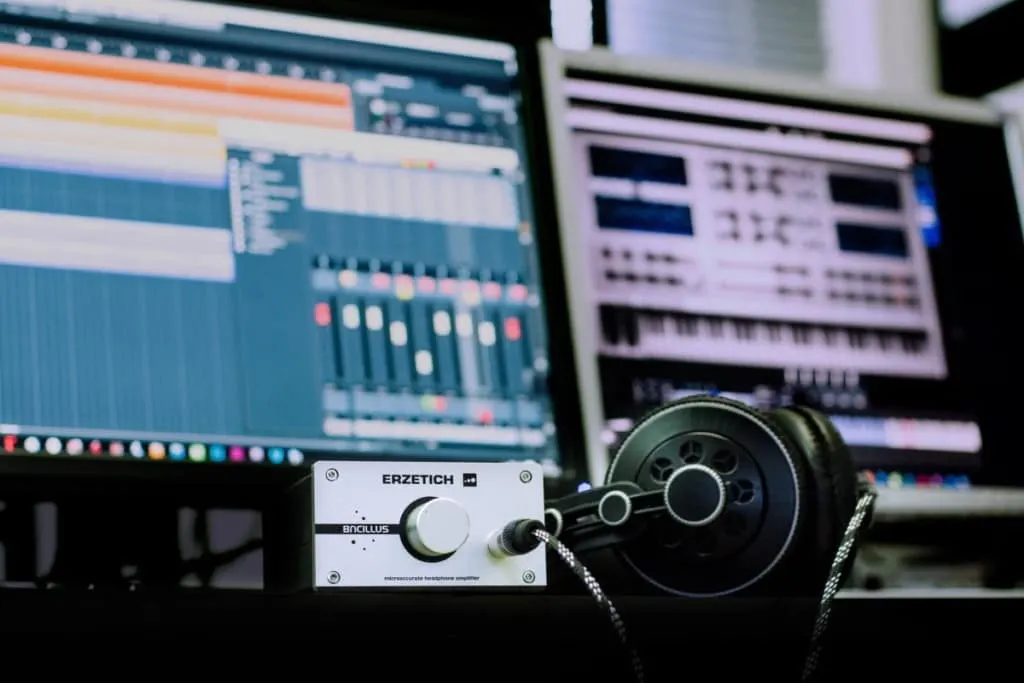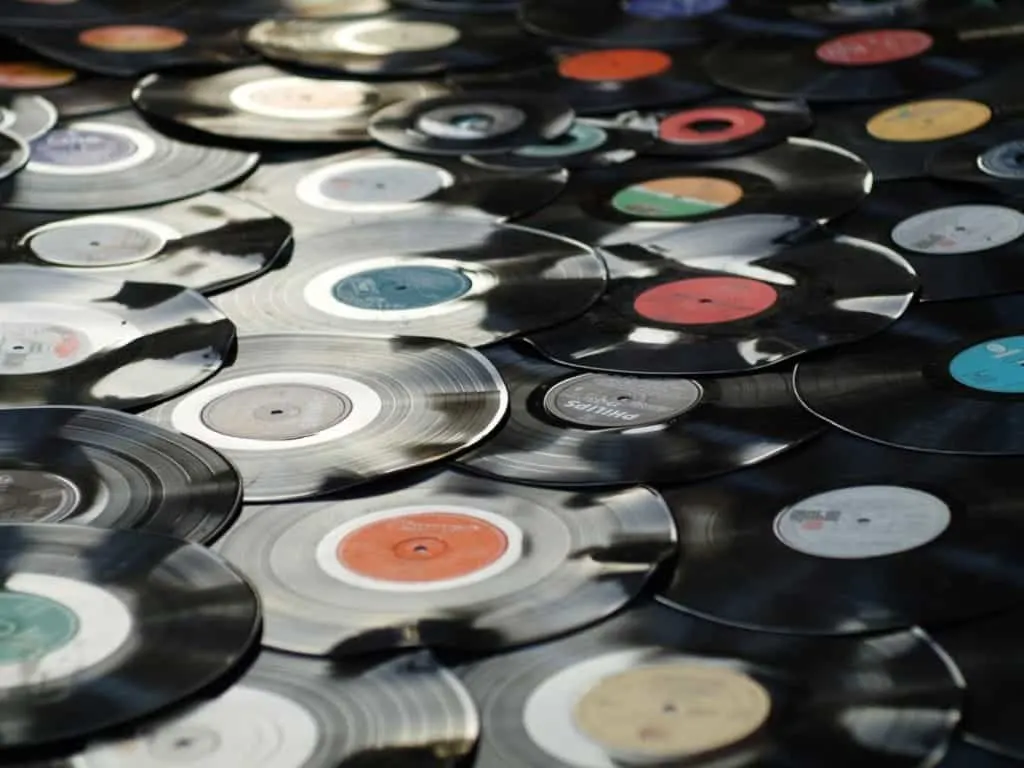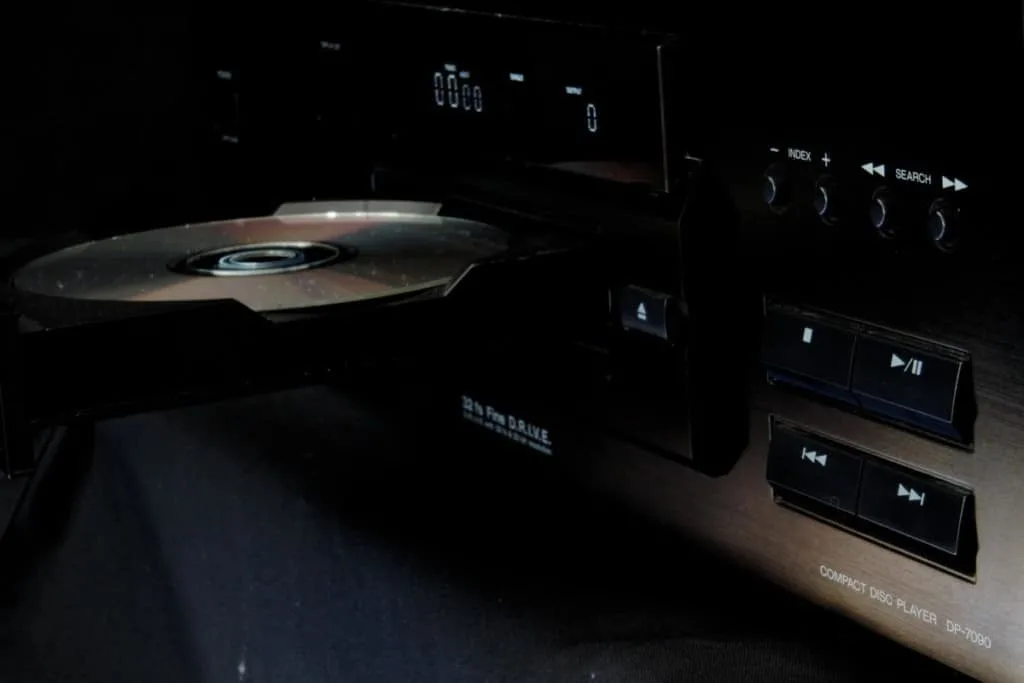Music production involves several elements.
When we first get started, we have a long list of products we want to buy right away, and once we cover the essentials, there’s always room for improvement. The question “Do you need a DAC for music production” is one I get a lot from students but also from colleagues that come from the old school like me.
So what even is a DAC in audio production (let’s clear this up)
- A DAC stands For Digital Analog Converter.
Sounds pretty simple right? However, I’m going to go into the technical aspects of how a DAC works, explaining sample rate, and bit depth on the way. I hope I can explain as clearly as possible the reasons why a DAC can change the way you hear music on your workstation.
So, do you need a DAC for music production, and what are the advantages of using one,
Unless you have an all-analog studio you will need a DAC. A good DAC made with top-notch components is a great way of improving your recording studio’s audio setup. It is as basic as thinking that the better quality the sound can be registered coming in, the better quality you’ll have going out.
Also, another advantage of a good DAC is it can help you polish mixes without any biases or noises making the signal dirty.
In other words, you can always benefit from adding a DAC to your system; It all depends on budget and availability.
Unless you have an all-analog studio this is for you, so buckle up!

DACs, The Anonymous Heroes Of The Digital Revolution
The digital audio revolution started a long time ago, but it took over the world merely a couple of decades ago.
By taking over the world I mean that there is a computer in every recording studio in the world (virtually) and that everybody uses at least one all-digital source to listen to music. To make things clear, none of that would have happened without the invention of DACs. DACs transform analog audio waves into computer-friendly information and vice versa.
Furthermore, DACs are needed because the digital audio revolution does not include enhancing our human body to receive digital data as audio; we need the analog waveform coming out of a speaker. These speakers don’t read zeros and ones, so you can find a DAC inside every single artifact that needs to translate the info.
In music production, this becomes a little more complicated. Let me explain to you the reasons why.
Infinite Dots Make A Line
In case you didn’t know this physics phenomenon, let me introduce it to you: a line is an infinite series of dots.
That is, as physics says, an unalterable fact of nature. Regardless of the line size, it is always an infinite succession of dots. Why is this important you might be asking yourself? It’s important because an audio waveform is a line made of infinite dots.
There are no processors powerful enough in the world to generate an infinite amount of information, hence when recreating a waveform digitally, there is always information being lost.
How much of that information is lost depends largely on how many samples a DAC generates per second. The high that number is, the closer it will get to the original audio wave.
The Vinyl Example
Vinyl records are a great example to demonstrate this.
If you look closely you’ll see that grooves are going across the record through which we put a needle with a magnet.
The needle “reads” waveforms directly from the record maintaining the whole process analog. This means that there is no information loss anywhere in the chain; what the musician played went into a tape and that went into the vinyl grooves. All lines are the exact infinite amount of dots.

The Pixels Example
The opposite example of vinyl is a digital camera (like the one on your phone). Digital cameras take a sample of reality and recreate it using tiny bits of digital information known as pixels.
It doesn’t matter how many pixels you have, it will never be infinite, and zooming in to a certain amount will show these little squares. The bigger the processing capability of the digital camera, the more you can zoom in without pixelating the image.
Sample Rate & Bit Depth
I hope that by now you have a better idea of why a DAC is a crucial element in music production. This is where it indeed gets interesting.
DAC Sample Rates
Let’s start with the sample rate.
It is particularly important because it tells us the number of samples per second the hardware will use to copy the original, analog waveform. The most common number is 44.100 Hz (twice the maximum amount a human ear can capture).
This means that the hardware employed takes 44,100 samples a second of the infinite amount of values from the original sound wave. For example, if you see a sticker of Hi-Res Audio on any piece of equipment, it means that the sample rate is twice as high, reaching the 96 kHz (96,000 samples a second).
Bit Depth And DAC
Let’s add another variable to the mix called bit depth.
This term is used to determine the amount of information each of those samples can carry. For example, recording music in 24 bits allows more data to be stored in each of the samples than when you do it in 16 bits. The difference is astronomical on paper, yet not so recognizable in the real world.
- A 16-bit tune can store 65,535 levels of information while a 24-bit one can store 16,777,216 levels.
Which DAC Is A Good DAC To Get Started With?
My suggestion for this would be a DAC with multiple inputs and outputs. You also want a DAC that has consistently stood the test of time.
With this in mind, I recommend the Cambridge Audio Azur DacMagic

Check out the Cambridge Audio AZUR DAC here on Amazon.
Coming In And Coming Out
If we have an analog signal coming into our computer and we record it using 16 bits and 44.1 kHz, we can create a quality close to that of a CD player.
This means that our recording is going to be good enough to be played at every major streaming platform in the world. The catch is when we encounter other formats like trying to put the music into vinyl or FLAC.
What Happens If You Use A 24-Bit Player To Play A 16-Bit Recorded Tune?
Although debatable (for untrained ears there´s no difference), what you hear is a rougher sound, with a shorter dynamic range and less clarity. A good example to illustrate this is to try and watch a video from 2002 on YouTube. It will surely play 240bps which was good for the size of the screen available at the moment but is way less than “good” today.
Recording music in 24 bits with 96 kHz assures you that there are no music players invented yet that will make your work sound bad, noisy, and unappealing.
Before I end this section, if you feel like going a little deeper in all the technical stuff above, you can check this amazing video (regardless of the nerdiest shirt on the planet) and this greatly-written post.
Your Chain Components And The DAC
So, where do you put your DAC in the chain? We said that a DAC works converting Digital to Analog (that’s where the name comes from). So, you need to put it before your speakers and after your player (which can be your computer).
For example, in my studio, I use two pairs of monitors (12″ and 6″) for the full range. I attach four of them to my Adam DA-SX (a fancy piece of gear, I know) which is fed by the amplifier.
- Having a DAC continuously attached to my studio gear allows me to record and playback in 24-bit 96 kHz formats.
Before reaching the conclusion, let’s address this issue we all think of and nobody speaks about.
There is an audiophile inside each of us who dedicate our lives to music production and recording. We are always trying to make things sound amazing eliminating all hums, buzzes, hiss, and such. For the audiophile inside of us and also to the audiophile who is going to enjoy our recordings, the 24-bit, 96 kHz combo is super appealing.
Once you blast that high-definition audio through high-end monitors, you don’t want to listen to music any other way.
In music production, it is always better to be covered than to be short. Furthermore, having a good DAC and working at the highest possible resolution will grant you peace of mind and might make your work endure the passing of time just like great old records did.
Embrace that audiophile within you and give him or her a big hug using high-end components to listen to your music.
Conclusion: Needing vs Wanting
This is what it all comes down to if you are starting in this business.
In my case, getting the proper equipment to have an all-round 24-bit 96 kHz audio quality in the studio allows me to take higher-paying gigs that require audio in that format. For example, it is a requirement for working with some videogame audio, some ASMR people, or big-name music productions that will end up going to vinyl.
- I have written an article on recording ASMR you can find it here.
All these not-so-common scenarios help pay the bills and make it all more interesting.
On the other hand, if it is just to indulge the audiophile in you and fall in love with what you do even further, it is more on the wanting side and just as valid. Even if all your productions end up being a compressed MP3, working on 24 bits and 96 kHz is like driving a Ferrari every day.
When is it the perfect time to take the leap? When you need it (my case) or when you can afford it (to indulge that audiophile in you).
Happy (High Fidelity) music-making!
